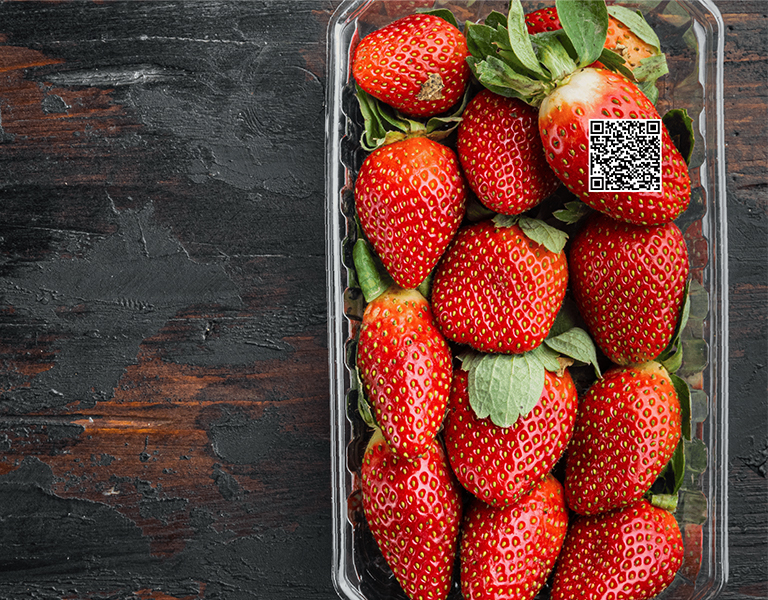In our last blog post on food supply chain visibility, we talked about why visibility and related concepts such as transparency and traceability matter. In this blog post, we delve into how food and beverage manufacturers and retailers can optimally use Industry 4.0 technologies to achieve and deliver stakeholder expectations concerning visibility, transparency, and traceability.
What is Industry 4.0?
Deloitte defines Industry 4.0 as:
“The marriage of physical and digital technologies such as analytics, artificial intelligence, cognitive technologies, and the Internet of Things (IoT). This marriage of the physical with the digital allows for the creation of a digital enterprise that is not only interconnected, but also capable of more holistic, informed decision making.”
How can food and beverage manufacturers use IoT, analytics, artificial intelligence, and cognitive technologies to increase supply chain transparency?
Internet of Things to Internet of Senses
Internet of Things (IoT) refers to the system of using sensors to capture, analyze, and transmit data from different types of sources over a wireless network without human intervention.
IoT is one of the key technologies that can help food manufacturers track and locate goods and isolate problems. For example, an IoT framework can communicate data from sensors that monitor the humidity and temperature of food items in transit. Connected to an ERP through a data lake, the framework can trigger alerts with regard to unsafe humidity and temperature levels, enabling faster responses and real-time decision making.
A report by Ericsson predicts that IoT will evolve into the ‘Internet of Senses’ by 2030, further extending IoT’s ability to capture sight, smell, taste, touch, and hearing through artificial intelligence (AI), augmented reality (AR), virtual reality (VR), and automation.
Keeping an eye on your machinery
Modern enterprise asset management (EAM) solutions can monitor operational efficiency, safety, and equipment compliance for signs of performance issues, downtime, and maintenance needs.
Having visibility over agricultural and food manufacturing equipment performance can help organizations track production efficiency and be proactive in identifying issues that can lower the quality of produce or compromise food safety.
Transparency beyond packaging
According to Label Insight and the Food Marketing Institute, 75% of consumers say they’re keen to turn to products that provide in-depth information beyond the packaging. Lightweight technologies like QR codes can enable this. When consumers scan a QR code on a food product, they will be directed to in-depth information.
In addition to nutritional information, the consumer can be made aware of the provenance of ingredients, allergens, GMO disclosures, food safety certificates, and even recipes for preparing food.

Figure 1: Snippets from mowisalmon.com explaining their end-to-end product traceability.
Mowi is the largest producer of farmed salmon in the world by volume and revenue.
Making sense of the deluge of data with analytics
As F&B companies increase connectivity and visibility along the supply chain, they will accumulate more data. International Data Corporation (IDC) forecasts that by 2025 there will be 55.7 billion connected devices globally, 75% of which will be connected to an IoT framework. IDC estimates IoT devices will generate 73.1 zettabytes of data in 2025, growing from 18.3 zettabytes in 2019.
Food and beverage manufacturers can use an analytics platform to leverage this data to identify process inefficiencies and anticipate trends such as food waste, safety, and productivity fluctuations and make recommendations.
Prescriptive intelligence
By coupling artificial intelligence (AI) and cognitive systems with the influx of supply chain data, F&B companies can create solutions that can predict future supply chain issues and prescribe remedies, allowing them to react earlier.
Modern AI platforms can continuously observe end-to-end supply chain data such as flow of ingredients, product movement, orders, demand, and capital and train itself on the patterns and detect port congestions, predict potential stock-outs, and suggest solutions such as shipping goods to a different location or reallocating stock between stores.
The total impact of the 2021 Suez Canal Blockage is estimated to be around $54 billion. With better visibility and the assistance of cognitive technologies, supply chain managers can evaluate the cost-versus-benefits of switching to a different route and execute a plan B.
Modern cognitive systems can even make autonomous decisions without human intervention or prompt a decision-maker to approve the decision before executing such decisions.
Rise of blockchain
Blockchain is a secure digital record-keeping technology that can be leveraged to identify and track sequential activities. In the food and beverage industry, blockchain can digitize supply chain information by securely managing records on:
- The source of ingredients, such as country of origin
- Producer-specific information, such as the farm or processing facility
- Product information, such as the date of production and production batch codes
- Food safety, inspection, and testing certification records
- Expected shelf-life or “best if used by” dates
Though currently limited to financial markets, leading manufacturers and retailers are considering blockchain to mitigate challenges related to trust, efficiency, and speed in their complex supply chains.
A robust ERP in the cloud
A modern ERP solution should have traceability options built in. Usability, the ability to visualize trace lines, and swift connectivity to data sources are few other signs of a traceability-enabled ERP system.
An ERP that is designed specifically to meet the challenges of food & beverage companies should offer out-of-the-box connectors and reports to help F&B companies start quickly. Having the ERP in the cloud also helps F&B companies to start small, scale fast, be agile and be more digital.
Conclusion
Many food and beverage manufacturers lack the technical and technological know-how to meet the supply chain visibility demands in today’s highly competitive global business landscape. But the fourth industrial revolution is a journey, not a destination. Organizations can start small and build a framework that can scale and adjust to face the growing demand for transparent food and beverage supply chains.
Related Blogs
Subscribe to our blog to know all the things we do


